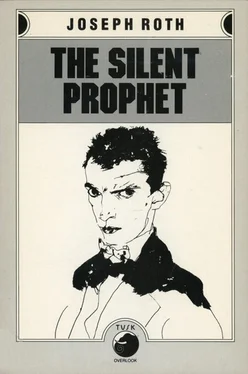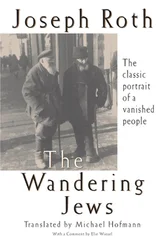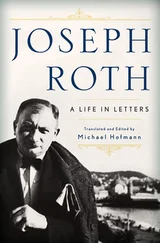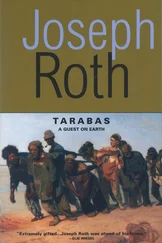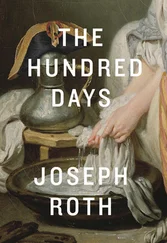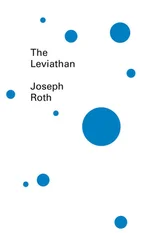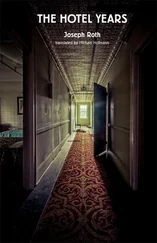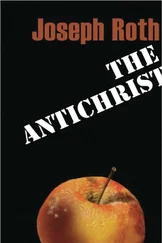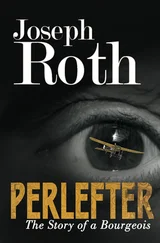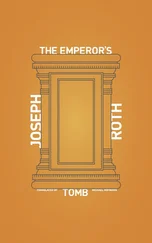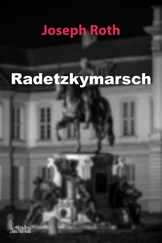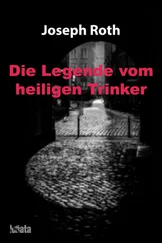It has been established that Roth was working on the present novel in 1927 and 1928; S. Fischer Verlag, to whom he was briefly under contract, rejected the unfinished manuscript in 1928. This seems to have discouraged Roth, although excerpts from the book appeared in two publications, 24 neue deutsche Erzähler and Die Neue Rundschau , in the following year. We also know that Roth went to Moscow for the Frankfurter Zeitung in the autumn of 1926 and became increasingly interested during this trip — as his Reisebilder show — in the changes brought about by the Revolution. There is evidence dating from this time of his disappointment with the embourgeoisement of the revolutionary idea and of his own ambivalent feelings towards the superficial allure of western city life, themes which were later to appear in The Silent Prophet .
In 1926 there was still much speculation about the fate of Trotsky, but interest died down after the publication of the latter’s autobiography in 1929. This may be one of the reasons why Roth decided to lay aside the novel he began after his trip to Russia. It is almost certainly the ‘Trotsky novel’ he himself referred to in 1938. Although Stalin (Savelli), Lenin, Radek, and Trotsky (T.) appear only as marginal figures in the book there are enough analogies between Friedrich Kargan’s fate and that of Trotsky, as it then appeared, to make the link. In his postscript to the German edition, Werner Lengning enlarges on this and also gives an account of how the manuscript came to light and was prepared for publication.
‘From the Reisebilder we know that Joseph Roth was in Moscow in the winter of 1926 for the Frankfurter Zeitung . The scene in the preface to the Kargan novel in the Moscow hotel on New Year’s Eve of 1926, indicates the uncertainty about Trotsky’s fate which then stirred the world. It was known that, after Lenin’s death, Trotsky sharply opposed Stalin, that he lost his post as People’s Commissioner for War in January 1925, that he stayed in Berlin in the spring of 1926 — still a member of the Politburo — fell ill there and had to undergo an operation. But one only learned later that, on 16 January, 1927, he was exiled to Alma Ata and, on 20 January, 1929, was expelled from the Soviet Union. … Trotsky’s autobiography appeared at the end of 1929 and he began his restless wanderings from France by way of Norway to Mexico. From the idol of anti-bourgeois circles in Germany, from the exile who could be sure of general human sympathy and who was possibly preparing his escape, expulsion created an outlaw. The Kargan material, already known through two partial printings of certain passages of Book Three, remained unpublished. Joseph Roth turned to other themes, yet he preserved the manuscript until his death [in Paris in 1939].
‘Shortly before aliens were expelled from Paris in the Second World War, his friends Friderike Zweig and Hermann Kesten had given the manuscript they had discovered to Joseph Roth’s French translator for safe keeping; then the trail was lost. In the confusion of the war and the post-war period, the Kargan manuscript, together with other effects, came to America, was there salvaged for the second time by Hermann Kesten in 1963, and was handed over to the Leo Baeck Institute in New York with the agreement of the firms of Kiepenheuer & Witsch of Cologne and Allert de Lange of Amsterdam [joint publishers and copyright holders of Roth’s work]. With other manuscripts which Hermann Kesten had selected for publication in 1964, the Cologne firm received the photocopies of the Kargan manuscript, the so-called Trotsky novel.
‘The initial perusal of photocopies at the firm was discouraging. One had the impression of sheets of manuscript and typescript hurriedly assembled in bundles before the flight, which had resisted all attempts at sorting until then.
‘The “Trotsky novel” finally came to the author of this postscript who had already become familiar with Roth’s handwriting in the course of deciphering the unpublished letters of Joseph Roth to Stefan Zweig and Blanche Gidon.
‘Inspection of what at first appeared as inextricably confused sheets gave a good insight into the working methods of Joseph Roth, who had reworded the novel repeatedly at different times, and finally there emerged two handwritten drafts of the early part of the novel (drafts A and B) and a typescript (draft C), which partly supplement each other. Draft B begins as a copy by Roth of draft A as reworked by him. Typescript C contains further condensed and tightened texts from draft B, but these make up only a third of the novel.
‘From the three drafts it became possible to reconstruct the novel continuously as far as Chapter Seven of Book Two. After that point no continuation appears to exist. However, by then the main characters belonging to the Kargan material as well as the line of action had clearly emerged, facilitating the deciphering of script, letter forms, page numbers (mostly scored through but recognizable with the aid of a magnifying glass as being in Roth’s hand), and any manuscript sheets not belonging to this novel were eliminated. The result showed that Joseph Roth not only worked on each successive draft of his novels with astonishing thoroughness, but also kept everything — from draft A to draft C — that was superseded at successive creative stages. All the material needed to complete the novel was therefore there. Where Joseph Roth’s initial pagination was either missing or illegible, it became necessary, with the aid of a magnifying glass, to test the internal relationship to the still unfinished chapters of Book Two and Book Three and to find the textual link between sheets by means of overlapping sentences. This cumbersome procedure brought the desired result: sheet succeeded sheet in unbroken sequence. Thus it was possible to produce an edition in which there is not a single word that is not by Roth himself.
‘It has already been said that version C includes only parts of the novel and goes only as far as the middle of chapter seven of Book Two. From there on only the B version exists, based, up to this point, on the revised portion of the old A version. The present edition therefore relies on the C version for the opening chapters and on the B version for the remaining ones.’
